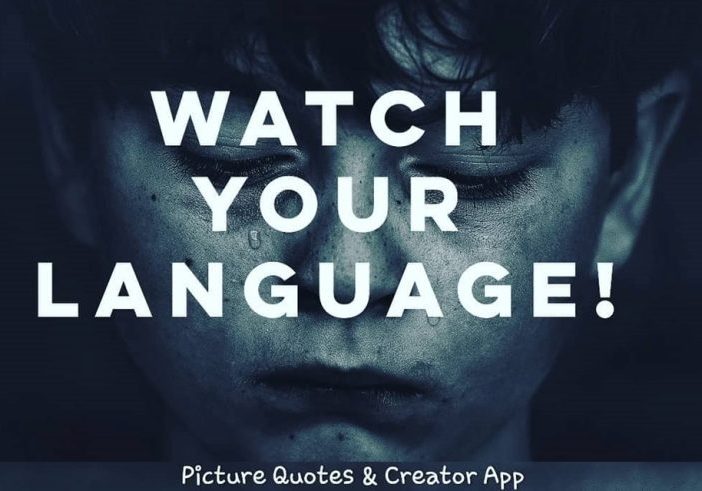Mind your (pathologising) language!
By Claire Stubbs, Boingboing trainer
Start by writing down all the words and phrases that you have heard for Mental Health…
“Weakness”, “disorder”, “abnormal”, “broken” and mental “illnesses”, are just some of the common words used to describe behaviours, thoughts and feelings that lie outside the norm in our society. Little attention is given to the negative side effects or consequences of pathologising language, and how it can help to create mental health stigma.
Like “water is to the fish,” language and its implications are very difficult for human beings to discern. When we create words and concepts describing aspects of ourselves or of our environment (also known as making distinctions), they appear as “truths” and, consequently, they dictate our actions. Martin Heidegger (1971), widely regarded as one of the most original and important philosophers of the 20th-century, put it this way: “We do not use language”… rather, “language uses us”.
What is “pathologising” language?
To pathologise is to view something through a medical lens, or in other words, a disease model. In this model humans are viewed as “healthy” or “diseased”, “normal” or “abnormal”. Some common pathologising words are “symptoms”, “treatment”, and “sick”.
What are the negative side effects?
Pathologising language is deficit-focused as it comes from the belief that people are broken and need to be fixed. Describing our behaviours, thoughts, and feelings as an illness can have a huge negative impact on our sense of self.
See, the thing is, mental illness is not like a physical illness. A broken arm does not think and feel. When a person is diagnosed with a mental illness their identity becomes associated with pathology – they are “abnormal”, “less than”, “broken” etc. This language can be a bully in disguise, as every time it is used to describe a persons’ self, it gives hope for “getting better” while also implicitly making a person feel less than, ashamed and embarrassed of themselves.
Furthermore, this language creates a power imbalance within the mental health system and wider society, as not only is it disempowering, but it also puts the helper in a position of “ok” and the person who is struggling as “not ok”. Such language strips people of their identities and they become “clients”, “service users”, “patients”, “Borderline”, “Bipolar”. How has this become acceptable? Reducing people to terms that are so harmful, oppressive and place people into restrictive boxes, when they are already struggling. If someone has a broken leg, we don’t call them “broken leg”, therefore how is it acceptable to label someone as a result of one aspect of their being?
How does it create stigma?
Stigma towards mental health issues is created and perpetuated by pathologising language. Using this language to describe people enforces the notion that people are abnormal, disordered, and less than, which helps creates stigma towards certain ways of being, and creates barriers to people seeking help.
A research project carried out by Rose, Thornicroft and Kassam (2007) to understand help-seeking behaviour for mental health difficulties found that young people are able to list over 250 different slang/derogatory terms to describe people suffering with mental health difficulties. This information is reported to come from the media and at home.
The consequence is that young people don’t feel able to access services when they need support, due to a fear of how they will be labelled, and 60% of this stigma takes place in school. Therefore, we ALL have a social responsibility to watch our language and make an effort to do things differently, as it is making it unsafe for people to be honest about what is going on for them, and stopping our younger generation seeking help and support.
What can be done?
We challenge you to switch from deficit-based language to strength-based, empowering language outside of these situations. See below for some alternatives that you can practice using… today!
| Pathologising expression | Reframe |
| Clients/patients/service users | Individuals I work with |
| They are so borderline | An individual I am working with is struggling with difficult symptoms such as… |
| Psycho | A person who has experienced psychosis, or a person who has schizophrenia |
| Lunatic, unhinged, maniac, nutter | Someone who has a diagnosis of… or who is suffering with…. |
| Happy pills | Anti-depressants, medication |
Run a workshop or classroom session within your school to help young people understand the impact of language, and support them to challenge negative use of language amongst their peers. Have a notice board that offers young people alternatives and ways of challenging their peers so that they feel safe to do this. This is a subtle yet great way of getting the message out there… and people will see it every day.
Although a simple change in language may seem like an insignificant gesture, it builds a culture of acceptance, openness, richness and trust, and aids in the process of moving towards recovery and well-being.
References
Heidegger, M. (1971). On the way to language. Translated by Peter D. Hertz. San Francisco: Harper & Row.
Rose, D., Thornicroft, G., Pinfold, V., & Kassam, A. (2007). 250 labels used to stigmatise people with mental illness. BMC Health Services Research, 7, 97. doi:10.1186/1472-6963-7-97.

